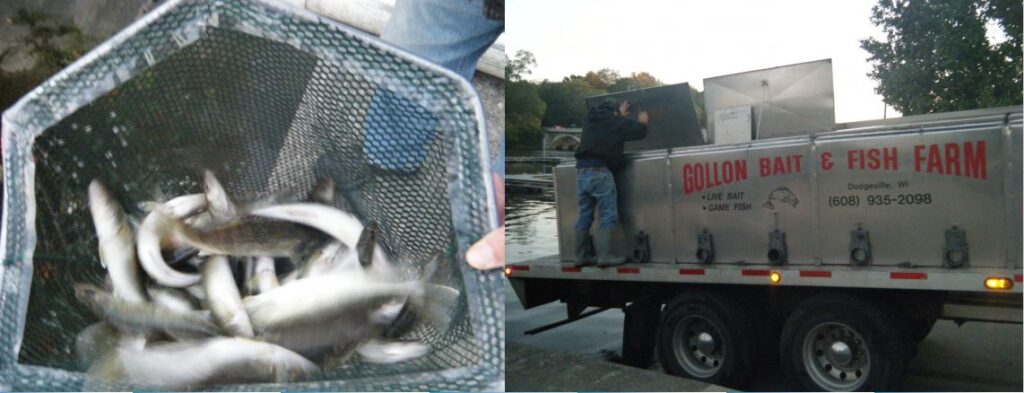MWA WALLEYE STOCKING HISTORY

Way back in 1993, eight like-minded fishermen gathered together to talk about their fondness for fishing for walleye. The discussion soon led to the possibility of forming a club for fishermen with the same passion for walleye fishing. Soon after, the Michiana Walleye Association (MWA) was formed. We talked about the club’s direction, its goals, principles, and commitment to the community, which resulted in the MWA Pledge. Our objective was the possibility of stocking walleye in the St. Joe River. Subsequently, conversations were held with Indiana DNR officer Mike Fox, who advised us to look into the Lake Michigan strain of walleye.
In the summer of 1993 we talked to Laggis’ Fish Hatchery, Gobles, MI., and they agreed to supply fingerlings for the stocking program. The club held poker nights and other fund raisers to obtain the money necessary to purchase the walleye. We had a meeting with the Michiana Steelheaders during which they provided money to help us get started. In the fall of that same year we purchased 3,000 walleye fingerlings to be stocked in the St Joe River. We also had great coverage by WSBT-TV. This all took place in the first eight months after forming the MWA club. It wasn’t much longer before DNR Fisheries Biologist Neil Ledet talked to the club about the Indiana DNR starting a walleye stocking program in the St. Joe river, thereby saving the club the task of securing its own funding.
The DNR started stocking fingerlings in 1995, and continued stocking fingerlings for the next ten years. By the end of the ten year program, walleye fishing in the river had improved significantly. The Indiana DNR had worked out an exchange program with the State of Michigan to obtain walleye fingerlings. Michigan provided walleye and Indiana provided Michigan with channel catfish stock. In its eleventh year the bad news began. Due to VHS disease there was no exchange of fish stockings. The St. Joe River DNR walleye stocking program ground to a halt. The MWA kept in touch with Neil throughout this period.
The DNR began to re-think their river stocking program due to the low survival rate of fingerlings and decided to switch to stocking 6” to 8” walleye which had a higher survival rate. The survival rate for a 3” fingerling is 3 to 3.5 percent. The larger fish currently stocked have a survival rate of nearly 35 percent.
At the end of the fifth year of the new program, Neil called the MWA, informing us the DNR would soon be forced to significantly reduce the number of walleye plants due to budget cuts. He also expressed a desire to continue the program, and not waste the first ten years of stocking efforts. The MWA and the Indiana DNR mutually agreed to continue funding the stocking program every other year with the larger 6-8” walleye, which have a larger survival rate. The MWA and the DNR contacted a private hatchery to provide the stock. Tim Gollon, Gollon Bait and Fish Farm, in Dodgeville, Wisconsin, agreed to supply the INDNR and MWA. For the past ten years we have seen a steadily increasing rate of survival and a strong growth rate in the St Joe River walleye. The years have flown bye fast. The rough total of walleye stocked by the INDNR and the MWA Club is now approaching approximately 55,000. IN the most recent Fall stocking, the INDNR and the MWA jointly stocked between 10-11,000 6-8” walleye in the St. Joe River.
In this article we have described how long the program has been running with all the ups and downs. We are very proud of what the MWA has been able to accomplish. It is very difficult to start and maintain a successful fishery in any body of water. Thanks to everyone who believed, and continues to believe, in our dream.
Let’s keep it going! GREAT JOB!! Good Fishing!
